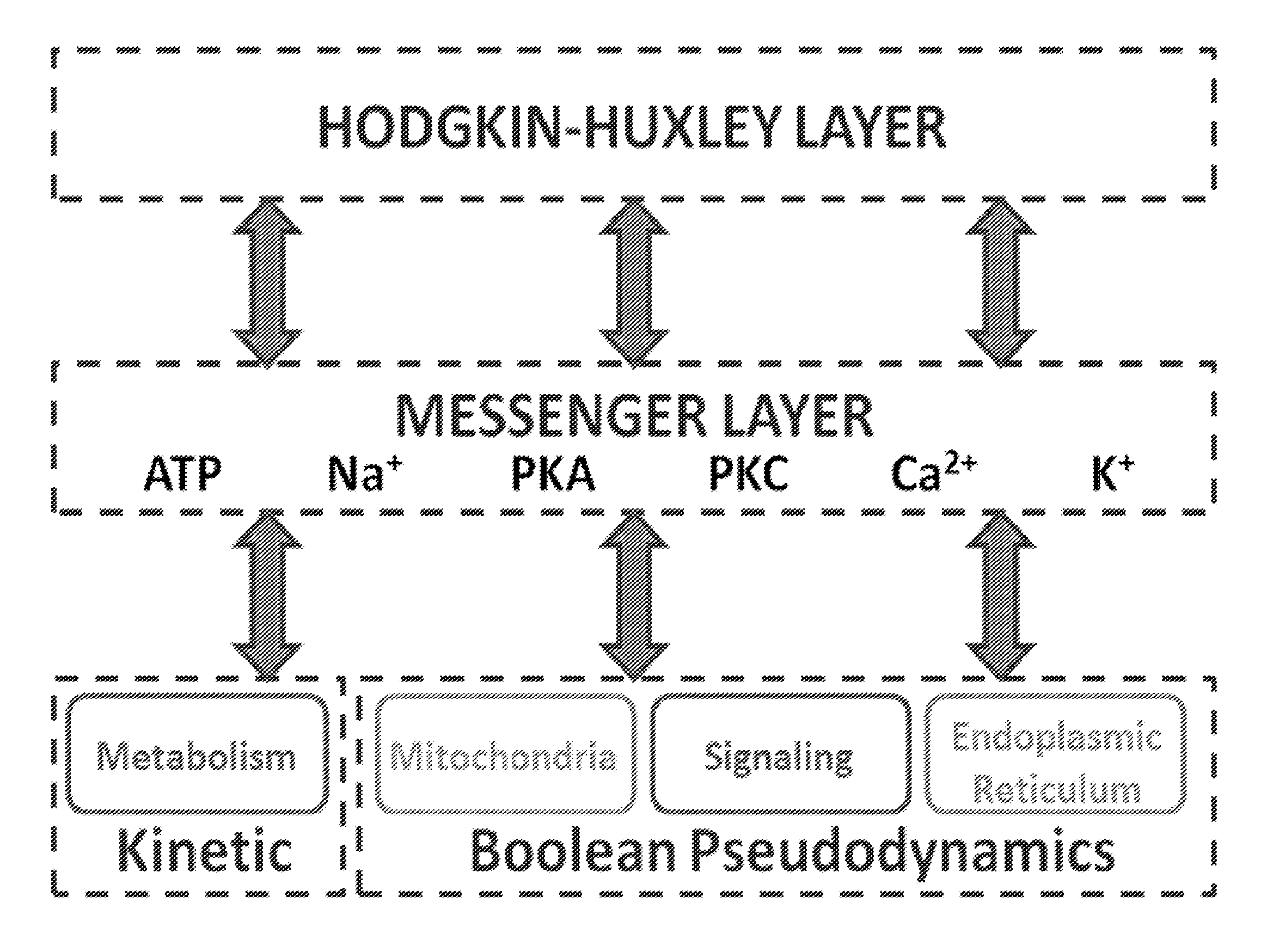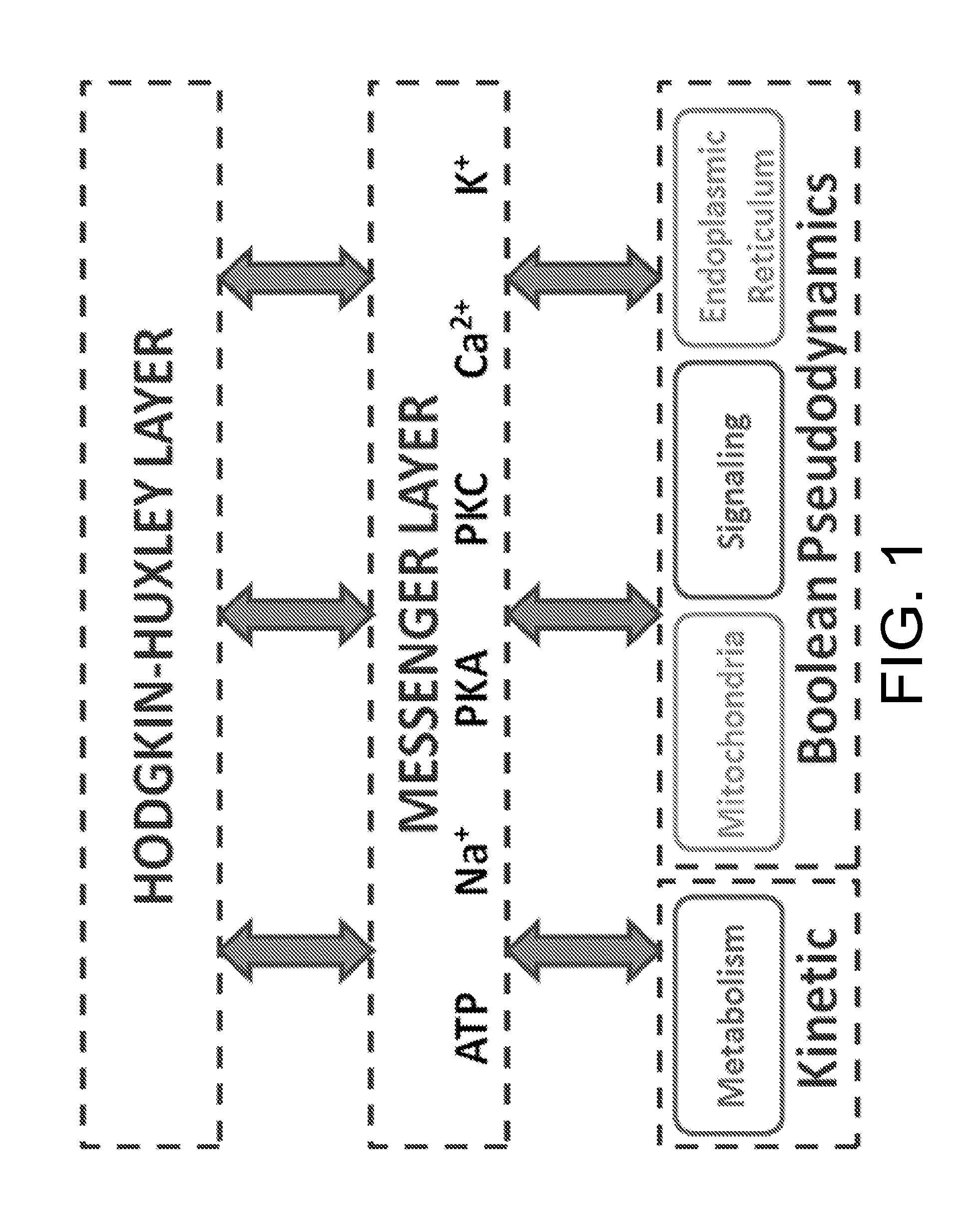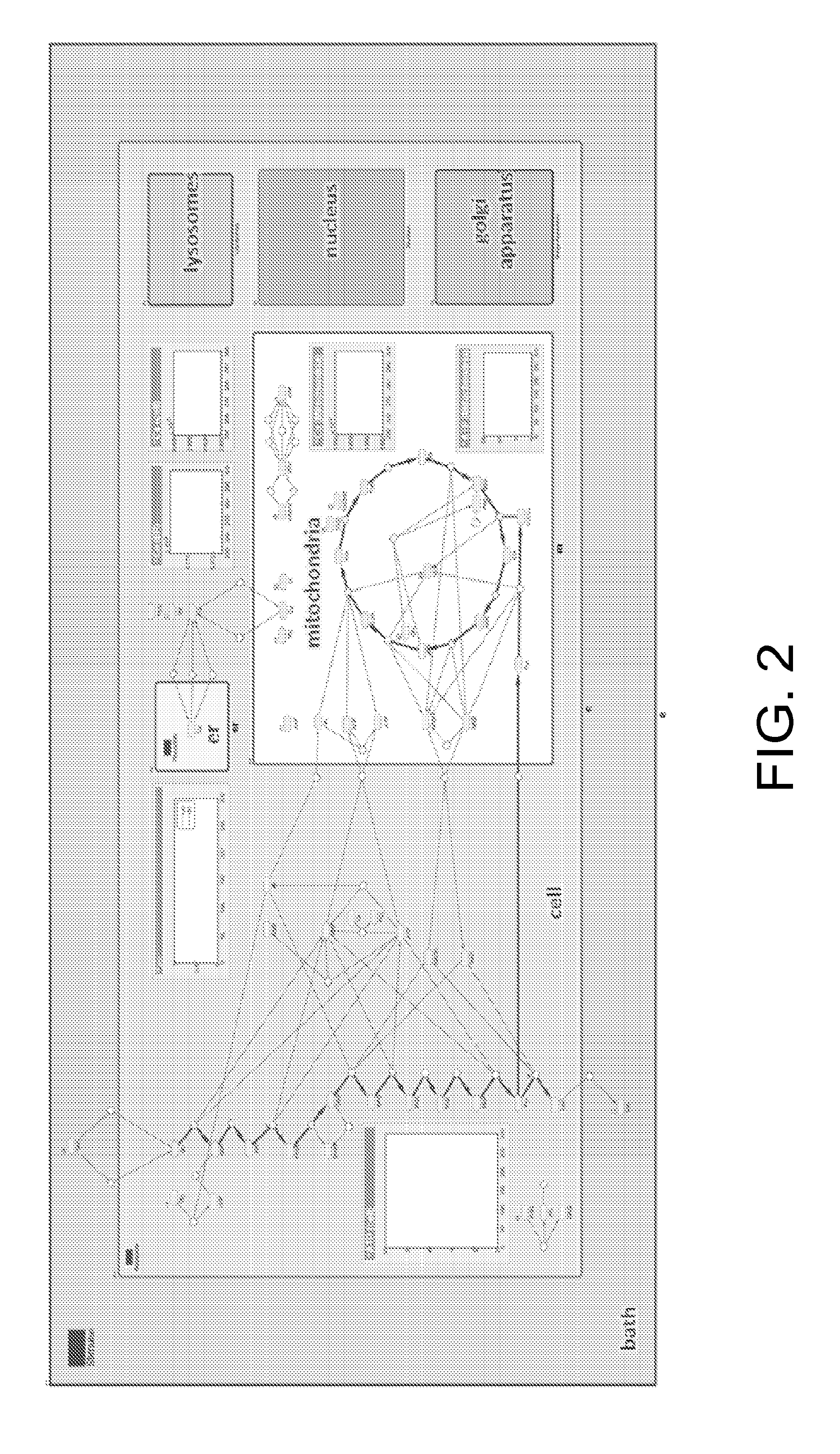Model and Methods for Identifying Points of Action in Electrically Active Cells
- Summary
- Abstract
- Description
- Claims
- Application Information
AI Technical Summary
Benefits of technology
Problems solved by technology
Method used
Image
Examples
example
[0073]This example calibrates the submodels for NG108 / 15 cells and generates an AP database for variations in cytosolic glycogenolysis and mitochondrial metabolism as well as parametric changes in the HH-model that reflect various cell sizes and experimental parameters.
Calibrating the HH-Model for Action Potentials From NG108-15 Cells
[0074]NG108-15 cells were cultured, experiments performed and model parameters filled according to published protocols [21, 60]. Exemplary data is provided in FIG. 7 as well as FIG. 8. Changes in intracellular ion or ATP concentrations lead to different AP shapes, as depicted in FIG. 8.
Calibrating the Metabolic Model
[0075]NG108-15 cells were cultured according to [21]. In addition to the published standard plating on coverslips, 1,000,000 cells were plated in either 6 or 12 75 cm T-flasks for differentiation. After 4 days in differentiation, the culturing media was replaced by 1 ml of the published [21] extracellular solution used during patch-clamp exp...
PUM
 Login to View More
Login to View More Abstract
Description
Claims
Application Information
 Login to View More
Login to View More - R&D
- Intellectual Property
- Life Sciences
- Materials
- Tech Scout
- Unparalleled Data Quality
- Higher Quality Content
- 60% Fewer Hallucinations
Browse by: Latest US Patents, China's latest patents, Technical Efficacy Thesaurus, Application Domain, Technology Topic, Popular Technical Reports.
© 2025 PatSnap. All rights reserved.Legal|Privacy policy|Modern Slavery Act Transparency Statement|Sitemap|About US| Contact US: help@patsnap.com



